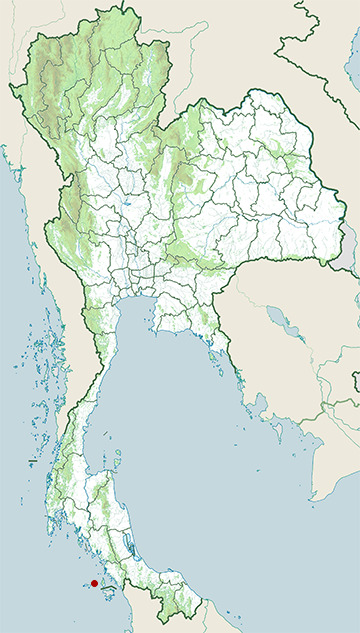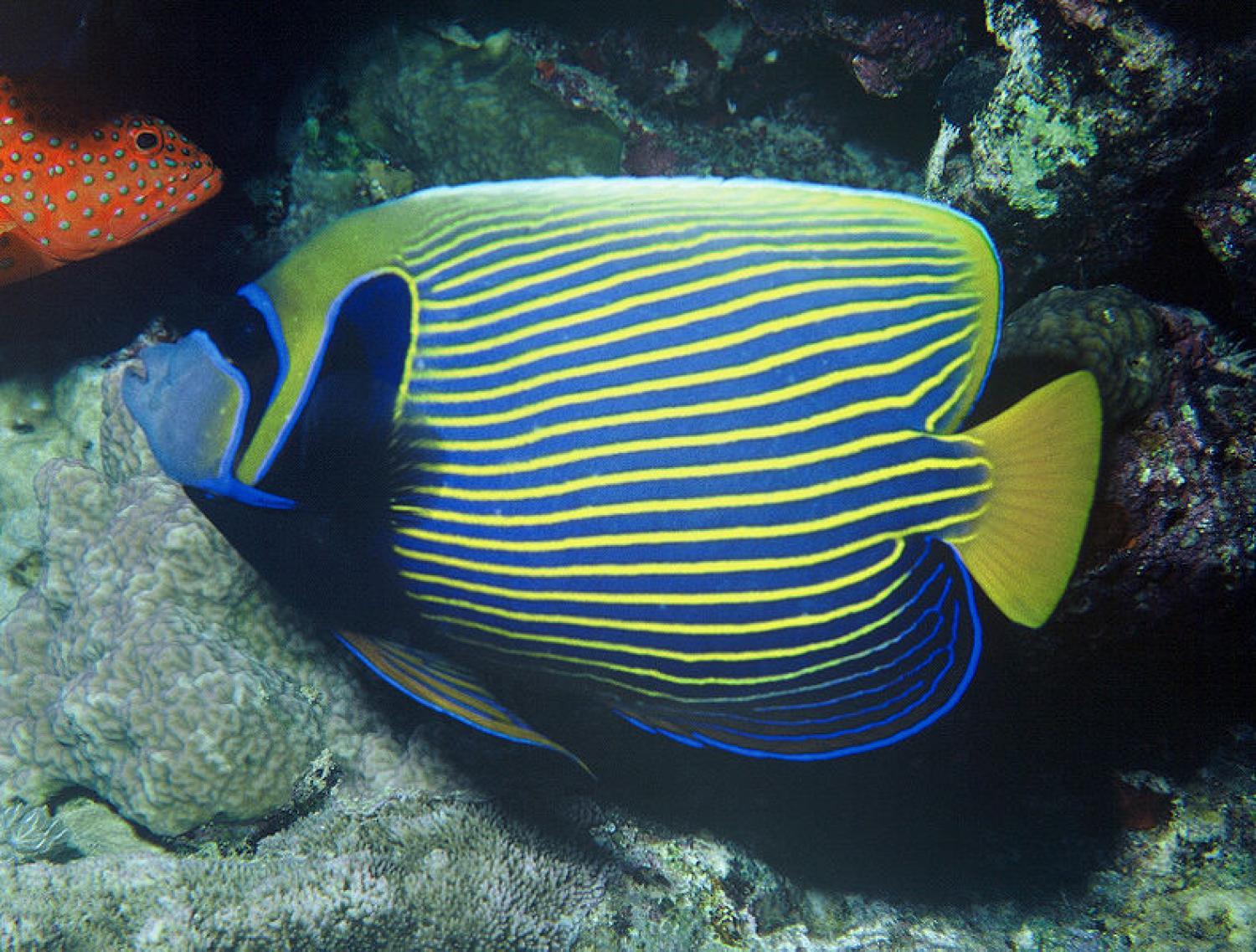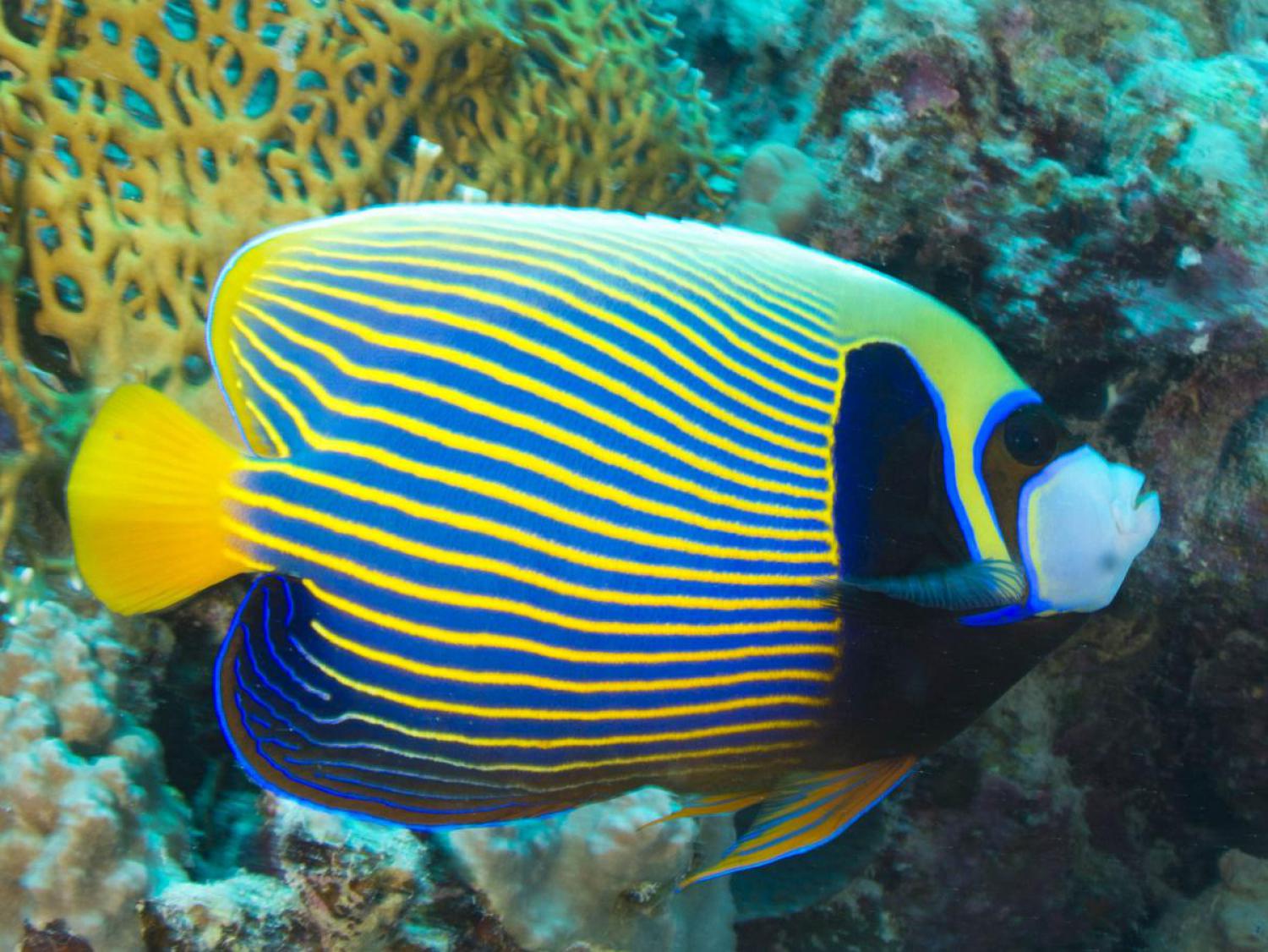Species of Thailand
Emperor angelfish
Pomacanthus imperator
Marcus Elieser Bloch, 1787
The emperor angelfish, Pomacanthus imperator, is a species of marine angelfish. It is a reef-associated fish, native to the Indian and Pacific Oceans, from the Red Sea to Hawaii and the Austral Islands. It ranges from coastal East Africa and the Red Sea in the west, to the Tuamotu Islands and Line Islands. Rare sightings have been recorded in the Hawaiian Islands, Puerto Rico, and Florida. These appearances are most likely due to aquarium release. Some populations have been observed as far as southern Japan to the Great Barrier Reef in Australia, New Caledonia, and the Austral Islands. This species is generally associated with stable populations and faces no major threats of extinction. It is a favorite among photographers, artists, and aquarists because of its unique, brilliant pattern of coloration.
Habitat
Emperor angelfish dwell in reef-associated areas at depths ranging from 1-100 m. Juveniles live alone and inhabit outer lagoon patch reefs or semi-protected exposed channels and reef flats. They tend to hang out at shrimp cleaning stations, feeding off parasites and dead skin of larger fish species. Subadults move to reef front holes and surge channels, while mature adults are found in caves in areas of rich coral growth on clear lagoon, seaward, or channel reefs. Males are territorial and will defend their habitat as well as the females living with them. An angelfish territory can be as large as 10, 760 square feet. Adults are also known for making a low-frequency “knocking” sound if disturbed or threatened by divers.
Coloration
Juveniles are dark blue with electric blue and white rings; adults have yellow and blue stripes, with black around the eyes. It takes about 24 to 30 months for an emperor angelfish to acquire its adult coloring. They grow to 40 cm (15.75 in) in length.
Juvenile to adult transition may not fully occur in an aquarium. Not only does their coloration change with maturity, but during mating events as well. The mask of a male will turn a dark blue, almost black, while the female will turn a bland color.
Reproduction Mechanisms
At dusk, a pair of emperor angelfish will rush to the surface, away from the reef, to mate in area where fertilized eggs can be taken away on currents, and then they then scurry back down to the reef. This mechanism not only prevents egg-eating predators from seeing their release, but the eggs are now able to disperse in areas where new populations of emperor angelfish can form. This trade-off between parental investment and fecundity allows for maximum fitness of this spe
Diet
Emperor angelfish are omnivorous, feeding on both small invertebrates and plants. Sponges and algae are their primary diet. They have bulky, strong jaws that are able to chew up the sponges, which are made up of tiny, needle-like pieces of silica (this would be the equivalent of a human chewing on small shards of glass). The digestive tract of an emperor angelfish coats its food with a layer of mucus in order to further protect itself from the sharp silica.
This article uses material from Wikipedia released under the Creative Commons Attribution-Share-Alike Licence 3.0. Eventual photos shown in this page may or may not be from Wikipedia, please see the license details for photos in photo by-lines.
Scientific classification
- Kingdom
- Animalia
- Phylum
- Chordata
- Class
- Actinopterygii
- Order
- Perciformes
- Family
- Pomacanthidae
- Genus
- Pomacanthus
- Species
- Pomacanthus imperator
Common names
- English:
- Emperor angelfish
- Imperial angelfish
- French:
- Ange de mer impérial
- Holacanthe empereur
- Poisson ange impérial
Synonyms
- Pomacanthus nicobariensis, Marcus Elieser Bloch & Johann Gottlob Theaenus Schneider (1801)
- Holacanthus nicobariensis, Marcus Elieser Bloch & Johann Gottlob Theaenus Schneider (1801)
- Chaetodon nicobariensis, Marcus Elieser Bloch & Johann Gottlob Theaenus Schneider (1801)
- Acanthochaetodon nicobariensis, Marcus Elieser Bloch & Johann Gottlob Theaenus Schneider (1801)
- Pomacanthodes imperator, Marcus Elieser Bloch (1787)
- Holacanthus imperator, Marcus Elieser Bloch (1787)
- Chaetodon imperator, Marcus Elieser Bloch (1787)
- Acanthochaetodon imperator, Marcus Elieser Bloch (1787)
Conservation status

Least Concern (IUCN3.1)
Photos
Please help us review our species pages if wrong photos are used or any other details in the page is wrong. We can be reached via our contact us page.
Range Map

- Tarutao National Marine Park


